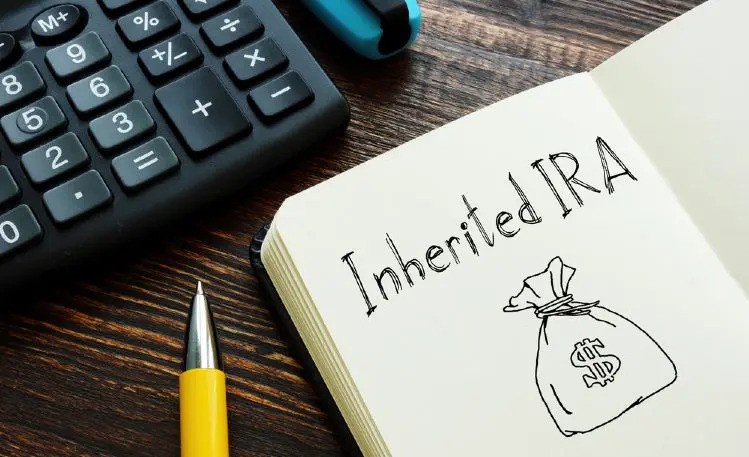
For the third consecutive year, the IRS has published guidance that offers some relief to taxpayers covered by the “10-year rule” for required minimum distributions (RMDs) from inherited IRAs or other defined contribution plans. But the IRS also indicated in Notice 2024-35 that forthcoming final regulations for the rule will apply for the purposes of determining RMDs from such accounts in 2025.
Beneficiaries face RMD rule changes
The need for the latest guidance traces back to the 2019 enactment of the Setting Every Community Up for Retirement Enhancement (SECURE) Act. Among other changes, the law eliminated so-called “stretch IRAs.”
Pre-SECURE Act, all beneficiaries of inherited IRAs were allowed to stretch the RMDs on the accounts over their entire life expectancies. For younger heirs, this meant they could take smaller distributions for decades, deferring taxes while the accounts grew. They also had the option to pass on the IRAs to later generations, which deferred the taxes for even longer.
To avoid this extended tax deferral, the SECURE Act imposed limitations on which heirs can stretch IRAs. Specifically, for IRA owners or defined contribution plan participants who died in 2020 or later, only “eligible designated beneficiaries” (EDB) may stretch payments over their life expectancies. The following heirs are EDBs:
- Surviving spouses,
- Children younger than the “age of majority,”
- Individuals with disabilities,
- Chronically ill individuals, and
- Individuals who are no more than 10 years younger than the account owner.
All other heirs (“designated beneficiaries”) must take the entire balance of the account within 10 years of the death, regardless of whether the deceased died before, on or after the required beginning date (RBD) for RMDs. (In 2023, the age at which account owners must start taking RMDs rose from age 72 to age 73, pushing the RBD date to April 1 of the year after account owners turn 73.)
In February 2022, the IRS issued proposed regs that came with an unwelcome surprise for many affected heirs. They provide that, if the deceased dies on or after the RBD, designated beneficiaries must take their taxable RMDs in years one through nine after death (based on their life expectancies), receiving the balance in the tenth year. In other words, they aren’t permitted to wait until the end of 10 years to take a lump-sum distribution. This annual RMD requirement gives beneficiaries much less tax planning flexibility and could push them into higher tax brackets during those years.
Confusion reigns
It didn’t take long for the IRS to receive feedback from confused taxpayers who had recently inherited IRAs or defined contribution plans and were unclear about when they were required to start taking RMDs on the accounts. The uncertainty put both beneficiaries and defined contribution plans at risk. How? Beneficiaries could have been dinged with excise tax equal to 25% of the amounts that should have been distributed but weren’t (reduced to 10% if the RMD failure is corrected in a timely manner). The plans could have been disqualified for failure to make RMDs.
In response to the concerns, only six months after the proposed regs were published, the IRS waived enforcement against taxpayers subject to the 10-year rule who missed 2021 and 2022 RMDs if the plan participant died in 2020 on or after the RBD. It also excused missed 2022 RMDs if the participant died in 2021 on or after the RBD.
The waiver guidance indicated that the IRS would issue final regs that would apply no earlier than 2023. But then 2023 rolled around — and the IRS extended the waiver relief to excuse 2023 missed RMDs if the participant died in 2020, 2021 or 2022 on or after the RBD.
Now the IRS has again extended the relief, this time for RMDs in 2024 from an IRA or defined contribution plan when the deceased passed away during the years 2020 through 2023 on or after the RBD. If certain requirements are met, beneficiaries won’t be assessed a penalty on missed RMDs, and plans won’t be disqualified based solely on such missed RMDs.
Delayed distributions aren’t always best
In a nutshell, the succession of IRS waivers means that designated beneficiaries who inherited IRAs or defined contributions plans after 2019 aren’t required to take annual RMDs until at least 2025. But some individuals may be better off beginning to take withdrawals now, rather than deferring them. The reason? Tax rates could be higher beginning in 2026 and beyond. Indeed, many provisions of the Tax Cuts and Jobs Act, including reduced individual income tax rates, are scheduled to sunset after 2025. The highest rate will increase from 37% to 39.6%, absent congressional action.
What if the IRS reverses course on the 10-year rule, allowing a lump sum distribution in the tenth year rather than requiring annual RMDs? Even then, it could prove worthwhile to take distributions throughout the 10-year period to avoid a hefty one-time tax bill at the end.
On the other hand, beneficiaries nearing retirement likely will benefit by delaying distributions. If they wait until they’re no longer working, they may be in a lower tax bracket.
Stay tuned
The IRS stated in its recent guidance that final regs “are anticipated” to apply for determining RMDs for 2025. However, based on the tax agency’s actions in the past few years, skepticism about that is understandable. We’ll continue to monitor future IRS guidance and keep you informed of any new developments.
© 2024








